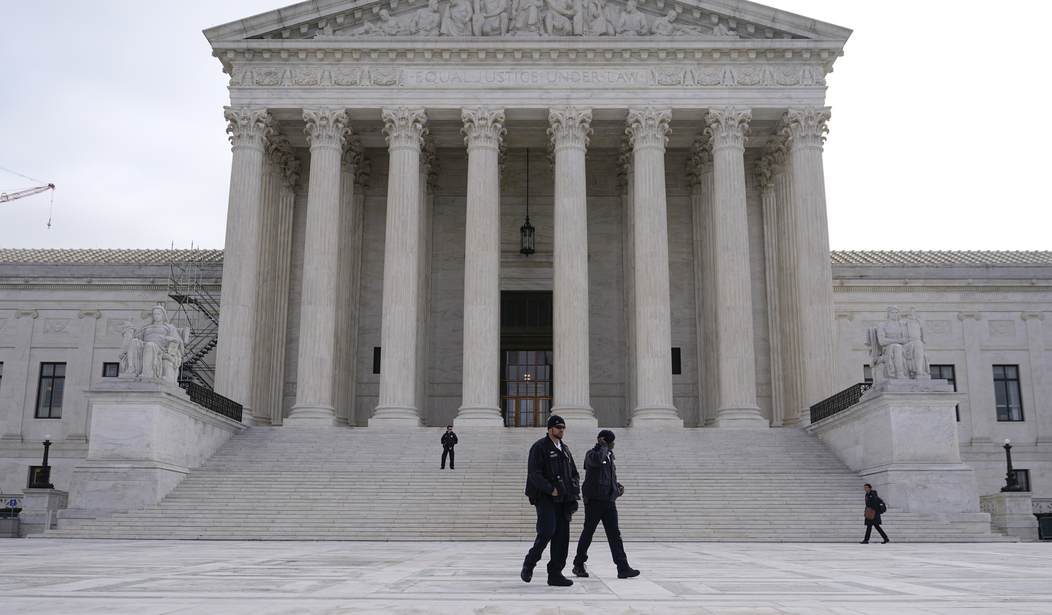This morning at 10 a.m. Eastern, the nine justices on the Supreme Court will hear a Second Amendment case for the first time since the Court handed down its landmark decision in New York State Rifle & Pistol Association v. Bruen last summer.
The pre-trial spin has been coming fast and furiously from both the media and gun control organizations. I’ve seen headlines declaring that the Court will choose between domestic violence victims and gun rights and even that the justices are taking up “red flag” laws, neither of which is the case. It’s true that the outcome of Rahimi could impact “red flag” laws if the Court issues an expansive ruling instead of narrowly focusing on the federal statute in question, but the Court isn’t balancing the interests of domestic violence victims versus the Second Amendment right to keep and bear arms. The question isn’t even if Zachey Rahimi should be able to possess a firearm. Instead, the Court is considering when and how someone can lose their Second Amendment rights; specifically whether a civil restraining order barring those accused (but not convicted) of domestic violence comports with the text, history, and tradition of the right to keep and bear arms.
The Supreme Court doesn’t allow cameras in the courtroom, but audio of the oral arguments in U.S. v. Rahimi will be streamed live starting at 10 a.m. You can follow along as they happen in the window below.
In a preview published on Monday, the New York Times laid out some of the background with Rahimi’s case , including his multiple arrests for violent crimes committed after that restraining order had been issued.
In December 2019, Mr. Rahimi and his girlfriend got into an argument in a Texas parking lot. During the fight, Mr. Rahimi knocked the woman to the ground, dragged her to his car and shoved her inside, according to court records. When he realized that a bystander was watching, he pulled out a gun and fired a shot.
Mr. Rahimi’s girlfriend ran away from him, and he later called her and threatened to shoot her if she told anyone what had happened, records show.
A Texas judge issued a two-year restraining order in February 2020 against Mr. Rahimi, who has a child with the woman. The judge found he had “committed family violence” and that such violence was “likely to occur again in the future.” As part of the order, the judge suspended Mr. Rahimi’s handgun license.
Prosecutors say Mr. Rahimi flagrantly defied the court’s order. In August 2020, he reached out to his girlfriend on social media and went to her house in the middle of the night. In November 2020, prosecutors say he threatened another woman with a gun, leading to his arrest on charges of aggravated assault with a deadly weapon.
According to a brief by the government’s lawyers, after someone who bought drugs from him “started talking trash” online, he fired an AR-15 at the man’s house. The next day, during a traffic crash, they say, he shot at a driver. He is accused of firing a gun into the air in a residential neighborhood three days after that. A few weeks later, after a truck flashed its headlights at him, prosecutors say he followed the truck and shot at another car. In January, they say, he fired shots in the air after his friend’s credit card was declined at a Whataburger restaurant.
During a search of Mr. Rahimi’s bedroom in January 2021, detectives say they found a loaded Glock and a rifle, along with a copy of the domestic violence protective order.
A grand jury indicted Mr. Rahimi on charges of violating the federal law that prohibits a person under such an order from having a gun, an offense punishable by up to 10 years in prison. Mr. Rahimi argued the law violated the Second Amendment.
If you’re having trouble keeping track, that’s six separate shootings that Rahimi’s accused of committing between December 2019 and January 2021, plus a charge of aggravated assault with a deadly weapon that did not involve a pull of the trigger. That’s a half-dozen opportunities for prosecutors to have asked a judge to keep Rahimi behind bars until trial because he posed a danger to the community at large, and unlike the issuance of a civil restraining order, it would have guaranteed that Rahimi didn’t have access to a firearm. As Fifth Circuit Judge James Ho noted in his concurring opinion in Rahimi, pre-trial detention is also “expressly contemplated by the Excessive Bail Clause and the Speedy Trial Clause” of the Constitution, but it was never used against Rahimi while he was racking up a long list of criminal charges.
It’s easy to argue that Zackey Rahimi shouldn’t have been able to possess a gun after he knocked his girlfriend to the ground and fired a shot at an innocent bystander. The real question is how Rahimi should have been prohibited from doing so. As the Fifth Circuit panel noted, the Department of Justice has relied on the argument that the Second Amendment only applies to “law-abiding citizens”; an argument with no limiting principle whatsoever. As far as DOJ is concerned, there’s no difference in the law between a violent offender and someone who commits a traffic violation; both are lawbreakers who no longer possess the right to keep and bear arms.
So what will the Court do with Rahimi? I think it’s too early to tell, honestly, though we might be able to read some tea leaves after oral arguments have taken place. That will be the main topic of discussion on today’s Bearing Arms Cam & Co this afternoon, and hopefully you’ll be able to tune in to our discussion and this morning’s oral arguments before the nine justices.









Join the conversation as a VIP Member